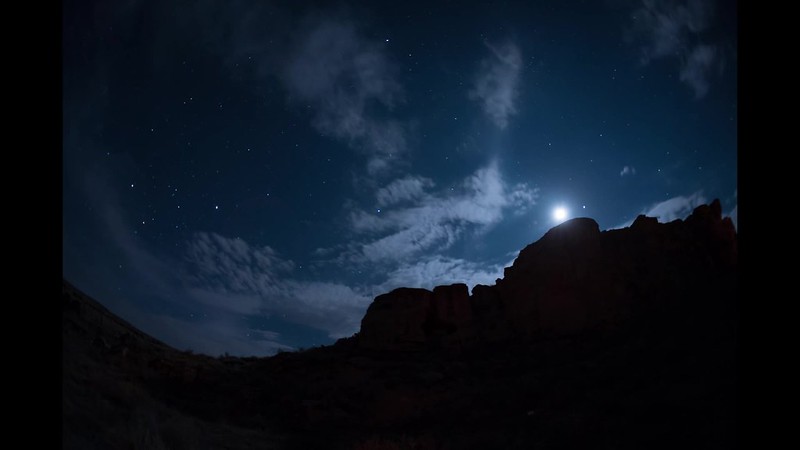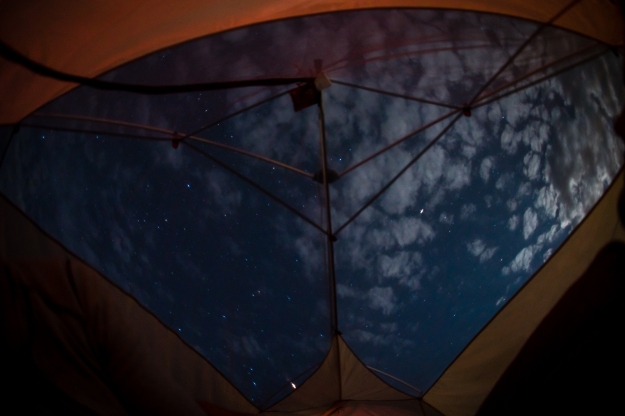This list making business is slow stuff, and too interesting, so I decided to split it into two 50-fact posts. Happy memorial day, and happy 100 posts to me! Here are your first 50 factoids!
1. People from different cultures differ in what colors they perceive. As a simple example, english speakers deem pink as a different color than red. Russian speakers don’t, but they have a fundamentally different word for dark and light blue. In chinese, red and pink are red and pastel red, and likewise with blue.
2. Corrosion occurs preferentially where you can’t see it, such as under the head of a bolt or a foot or two under sea water. This is due to small concentration differences which cause a charge differential, which leads to corrosion. This is one reason trying to detect corrosion is very hard.
3. The biggest silicon wafers made are 45 cm or 17.7″, though they aren’t yet in production. The silicon is 99.9999999% pure, and monocrystaline.
4. Glass doesn’t have a set crystal structure; this is why it can cut so badly, because shards can be arbitrarily sharp. Auto glass is laminated with plastic to help hold it in place.
5. Many of the scenes in engineering in “Star Trek” and “Star Trek: Into Darkness” are filmed at the Anheuser-Busch brewery in Los Angeles. Look for the green labels reading “VF##”– these are vertical fermenters. In another part of the movie, Chekhov slides past some really shiny tanks on a red floor– these are horizontal fermenters. I used to work at an AB brewery, so I got really excited when I first noticed this.
6. A neutron star is so-called because all the electrons and protons are forced by immense gravitational pressure to combine. The whole star is nearly as dense as a nucleus, or 5.9×10^14 times denser than water. This is equivalent to the weight of a 747 in the space of a grain of sand.
7. Have you ever tried dividing by zero on a calculator? A black hole is remarkably similar to dividing by zero in space.
8. Near a black hole, forces called “tidal forces” (which are felt everywhere, but are crazy strong near a black hole) can be very strong over short distances, ripping anything apart. This is called “spaghettification” (no joke).
9. After the death of Ivan the Terrible in Russia, three men claimed to be his lost son, Dimitri. They are collectively referred to as the false Dimitris. The first successfully became Czar for ten months, after which his was killed and cremated. His ashes were loaded into a cannon and shot towards Poland, as he was believed to be a Polish spy.
10. The word “defenestration” means “the act of being thrown from a window”. The need for such a word was precipitated by two such events in Prague.
11. The 1904 World’s Fair and Olympics were held in St. Louis. In the marathon, the man who finished first hitched a ride in a car, one favorite made himself sick eating apples, and another favorite was run off course by an angry dog.
12. Toasted ravioli, or breaded deep-fried ravioli, are a culinary delight in St. Louis. Also popular is provel, a cheese used almost exclusively in St. Louis (giving a hilarious Wikipedia by someone who seems unimpressed).
13. The Cahokia mounds are a set of artificial hills in Southern Illinois. They may look unimpressive, but they are about a thousand years old, built by a native culture which later abandoned them. An old nickname of nearby St. Louis is “mound city”, because similar mounds used to be found in the city.
14. Peter the Great of Russia was 6′ 7″. In his early adulthood, he traveled to Europe to learn about shipbuilding, a passion of his. He tried to pass off as a member of the company, but his great height continuously gave him away. The little shack where he lived in Holland still stands near Amsterdam.
15. Over 100,000 serfs died building St. Petersburg, Russia. Peter the Great commissioned the city because the only Russian port at the time, Archangel, was occluded by ice 6 months of the year.
16. 5 people died building the Empire State Building.
17. The first electric light bulb and dynamo west of the Mississippi was on the campus of the University of Missouri at Academic Hall. The building caught fire and burned to the ground, leaving only the front columns of the building. They remain standing today.
18. Thomas Jefferson has two tombstones: one at his home of Monticello, and one at the University of Missouri. The University of the Missouri is the first land-grant university in the Louisiana Purchase, and many aspects of the university were modeled after Jefferson’s University of Virginia.
19. Cape Hatteras on the Outer Banks has had over 600 recorded shipwrecks. The most recent occurred during Hurricane Sandy in 2012.
20. In November 1956, the USSR invaded Hungary. The Hungarian water polo team fled the country after watching the invasion from nearby mountains. On December 4, the Russian and Hungarian teams met in the gold medal qualifying game of the 1956 Olympics. The game is called the “Blood in the Water” game, due to its violence. The story is told in a documentary called “Freedom’s Fury.”
21. The shortest player in the history of baseball was Eddie Gaedel, who batted for the St. Louis Browns on August 19, 1951. He stood 3’7″ tall, and wore the number”1/8″. Because he had such a small strike zone, he was walked. His contract was voided by baseball the next day.
22. Mercury is a toxic metal that used to be used in thermometers due to its consistent thermal expansion. The mad hatter concept owes to mercury poisoning in old hat makers. A researcher at Duke died in 1997 after a few drops of methyl mercury fell on her glove; organic mercury is incredibly toxic.
23. Humans now have 46 chromosomes in 23 pairs, but at some point in history, they had 48 chromosomes, the same as chimpanzees. Scientists theorize that the number changed when the human population dwindled at one point in history.
24. Splenda is chemically identical to sugar, but it is the mirror image “left-handed” sugar. The left-handed sugar tastes the same as sugar, but it can’t be digested, because the human body only handles right-handed molecules. However, brain scans of people eating sugar or splenda show that the brain registers more reward sensation with sugar. The body can be clever! (I tried to find this study; unfortunately, searching about splenda turns up a lot of nonsense to wade through.)
25. Cuttlefish can change the color of their skin for communication or for camouflage. They can make complex, varying patterns, or they can match a stationary one. Check out this video of a cuttlefish matching a chessboard.
26. Women generally have a better sense of smell than men. in particular, they are better at smelling something they’ve smelled before, where men show less improvement.
27. The Marianas Trench, the deepest ocean trench, is 6.8 miles deep at its deepest point. We still know very little about our deep oceans.
28. Giant squids have been written about since ancient times, but we took our first picture of one in 2004.
29. Only two elements are liquid at standard room temperature: mercury and bromine.
30. The world’s deepest hand dug well in is Greensburg, Kansas. Greensburg was decimated by an EF5 tornado in 2007. It has since started rebuilding, and aims to be the first LEEDS certified green city in the US.
31. Hurricane Camille came over land in Louisiana in 1969 as a category 5 hurricane. Of the 259 deaths caused, 123 were in the mountains of Virginia, in Nelson County (over 1% of the population). The storm dropped 27 inches of rain in a few hours. 133 bridges were washed out, and birds drowned in the trees.
32. Many of Thomas Jefferson’s inventions still reside at Monticello in Charlottesville, VA. There is a clock that tells the day of the week, a dumb-waiter, and a device for writing on two pieces of paper at once.
33. Blue eyes are caused by the presence of less pigment in the eye, resulting in a different light scattering pattern. Blue-eyed baseball players sometimes have much lower daytime hitting averages, because blue eyes filter out less glare.
34. Albinism is principally defined by eye defects caused by the lack of pigment during the formation of the eye. Without pigment in the iris, the eye doesn’t properly focus light, leading to numerous vision problems. It is possible to be albino while still having normally pigmented skin.
35. Catgut is prepared from animal intestine, and was used historically to make strings for instruments. Its name is probably a shortening from cattle gut, for those of us who like kitties.
36. Paper didn’t make its way to Europe until after the year 1000. It was made from old fabric and clothes. Old paper doesn’t yellow and age the same way as 1900’s paperbacks because it tended to be acid-free. Books can last centuries if the paper and ink are acid free.
37. Organisms around deep sea vents metabolize hydrogen sulfide from the vents to survive. 300 new species have been discovered around such vents; because exploration there is so hard, there are likely many more.
38. Hydrogen Fluoride is considered a weak acid, because hydrogen and fluoride bond strongly as resist dissociation. However, HF will go after just about anything including glass. HF is very dangerous to work with, because it does not hurt immediately. It seeps through the skin and begins to dissolve the bone.
39. Phosgene was used in chemical warfare in World War 1. The Japanese also used it extensively in World War 2. It smells like freshly cut grass.
40. The kite buggy was invented in China in the 1300s. It is a cart drawn by wind power. It seems hard.
41. Capillary action in trees helps fluid rise in trees. This is how tree several hundred feet tall supply water to the leaves.
42. The Negro Leagues baseball museum is in Kansas City, Missouri. Many of the negro leagues teams were fairly successful, and drew enthusiastic crowds. The exclusion of blacks from baseball was shameful, but they made something great in spite of it. You can learn about Satchel Paige or Buck O’Neal, as well as the various negro leagues teams.
43. The Eads bridge in St. Louis was the longest of its kind when it was built, over a mile wide. The supports are some of the deepest ever sunk, and 15 workers died due to decompression sickness.
44. The Anheuser-Busch brewery in St. Louis is the biggest brewery in the world. It outputs 25 million barrels per year. You can visit for free and get some complimentary beer.
45. The international rose test garden in is Portland, Oregon. It is free to visit and they have over 550 varieties.
47. The male paradise whydah grows out a foot-long feather during mating time to impress the female paradise whydah. The paradise whydah is a parasitic species that uses the nest of the melba finch.The male whydah imitates the melba finches song. In captivity, the whydah cannot reproduce without the melba finch also present.
48. The carrion flower is an enormous bloom that stinks of rotting flesh. It can be up to nine feet tall.
49. Blue is a rare color for organic molecules. This may be because the color is associated with alkaline conditions, which are relatively rare in organisms.
50. Monarch butterflies can sense the earth’s magnetic field. They use it to complete their 2000 mile migration.
Come back Thursday for 50 more interesting factoids! Happy 100 posts!











